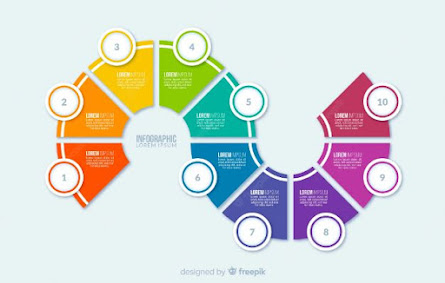ADS
Software process modeling is the process of capturing software development processes as models. You can use these models to understand how your organization currently works, see where there are inefficiencies, and enable teams to iterate on software development processes over time. Software process modeling enables you to document, analyze, and optimize the way your team develops software. It also lets you identify areas for improvement so that you can make adjustments accordingly. Without a solid understanding of your current software development processes, it’s difficult to know what needs to change. Luckily, with the right information and visibility into different processes, you can streamline them all in one place. Here are the 10 most important steps in software process modeling.
Define your current software development process
The first step in software process modeling is to understand your current software development process. Before you can improve your processes, you’ll need to know where you currently stand. Start by documenting the following details: - Who is responsible for each step of the process? - What tools does your team use? - What are the criteria for moving each stage of the process? - How long does each step in the process take on average? - What percentage of time is spent on each step? - What departments are responsible for which stages of the process? - What sort of communication occurs between each stage?
Estimate how many person-hours are required for a given task
The next step is to estimate how many person-hours are required for each stage of your software development process. For instance, let’s say you’re estimating development time for a new feature. You’ll want to account for the development time, testing time, and the time it takes to get stakeholders onboard with the feature. This will give you a clearer idea of how long the whole process takes, from start to finish.
Identify bottlenecks in your process
The next step is to identify the bottlenecks in your software development process. Once you have a clearer picture of your process, you’ll be able to identify areas where improvement is necessary. Start by brainstorming ways you can improve the inefficiencies in your current process. Here are some common ways organizations try to streamline their processes: - Hiring: The longer it takes to hire developers, the more time and money is being lost. Your team members need to be proficient in hiring techniques that streamline the process without sacrificing quality. - Automating: If you can make processes more efficient by using software or other automation, you’ll save money and time. - Planning: If you’re using a waterfall model, each milestone in the process can take a very long time. Consider switching to an agile model.
Define ideal software development processes
Once you’ve identified the bottlenecks in your current process, you’ll want to define ideal software development processes. Start with your current process and try to improve on it. You can use the same considerations above in the “Identify bottlenecks in your process” section together with the question “What would be the ideal process for our team?” You can also take a look at the following questions: - What does your team have the capacity to deliver? - What does your team have the capacity to deliver on time? - What does your team have the capacity to deliver to the level of quality you expect? - What does your team have the capacity to deliver with the resources available?
Estimate how many person-hours are required for a given task with an ideal process
This step is simple: Take the estimates you made in the previous section and use them to calculate how many person-hours are required for each stage of your ideal process. You can also create weighted averages to account for variability across different development teams. This will help you estimate how much time it will take to develop certain features or make changes to your existing product.
Identify bottlenecks in your ideal process
Once you’ve defined your ideal process, you’ll want to identify the bottlenecks in your process. Again, start by brainstorming ways you can improve the inefficiencies in your current process. Here are some common ways organizations try to streamline their processes: - Hiring: The longer it takes to hire developers, the more time and money is being lost. Your team members need to be proficient in hiring techniques that streamline the process without sacrificing quality. - Automating: If you can make processes more efficient by using software or other automation, you’ll save money and time. - Planning: If you’re using an agile model, each milestone in the process can take a short amount of time.
Decide on a single optimal process based on the bottlenecks you identified
Once you’ve identified the bottlenecks in your ideal process and the one in your current process, you can decide on a single optimal process based on the previous information. Take your current process and optimize it based on the information you gathered from your ideal process. If you’re having a hard time deciding, start with the following: - Does your team have the capacity to deliver what’s expected? - Does your team have the capacity to deliver on time? - Does your team have the capacity to deliver to the level of quality you expect? - Does your team have the capacity to deliver with the resources available?
Wrapping Up
Now that you’ve identified the bottlenecks in your current and ideal processes, you can use this information to decide on a single optimal process. This will help you better manage projects and make sure they’re delivered on time and with the quality your stakeholders expect. Software process modeling is an essential part of software development, and it is something all teams should practice. With the right processes in place, you can make sure your team is working as efficiently as possible, stakeholders have visibility into what’s being worked on, and projects are being delivered on time.




0 Comments